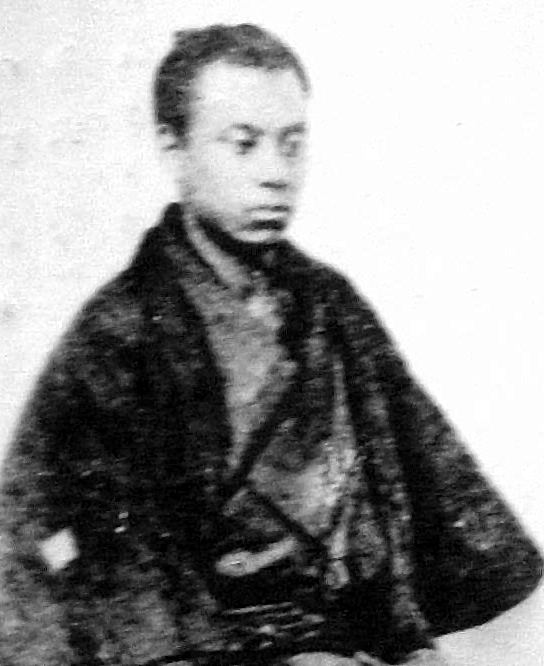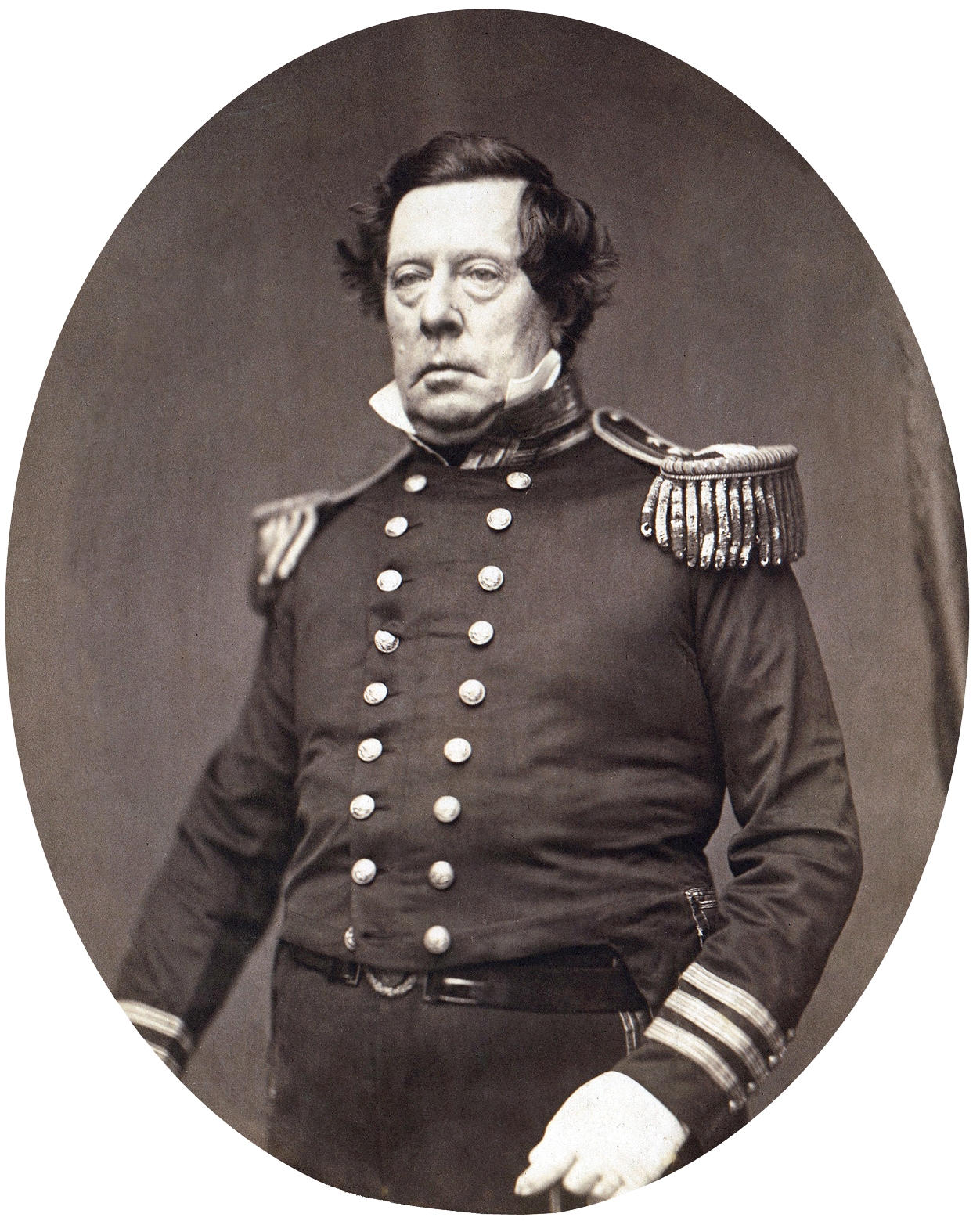|
Kaientai
The was a trading and shipping company and private navy, considered to be the first corporation in modern Japan. Kaientai, originally named Kameyama Shachū (亀山社中, "Kameyama Troupe"), was founded by Sakamoto Ryōma in Nagasaki in 1865 during the Bakumatsu, and it was initially funded by the Satsuma Domain and other groups and domains. The logo of SoftBank Group is based on the idea of a "21st century Kaientai". Members of Kaientai Born in Tosa Domain * Sakamoto Ryōma – a commanding officer of Kaientai * Iwasaki Yatarou * Sawamura Sōnojho * Sasaki Takayuki – a second commanding officer of Kaientai after Ryōma's death * Nagaoka Ken'ichi * Ishida Eikichi * Sakamoto Nao – Ryōma's adopted child * Sugano Kakubei * Jingū Umanosuke * Nomura Koreaki Born in Echizen Province * Seki Yoshiomi * Watanabe Gōhachi * Odani Kōzō Born in Kishū Domain * Mutsu Munemitsu Count was a Japanese statesman and diplomat in Meiji period Japan. Early life ... [...More Info...] [...Related Items...] OR: [Wikipedia] [Google] [Baidu] |
Kaientai
The was a trading and shipping company and private navy, considered to be the first corporation in modern Japan. Kaientai, originally named Kameyama Shachū (亀山社中, "Kameyama Troupe"), was founded by Sakamoto Ryōma in Nagasaki in 1865 during the Bakumatsu, and it was initially funded by the Satsuma Domain and other groups and domains. The logo of SoftBank Group is based on the idea of a "21st century Kaientai". Members of Kaientai Born in Tosa Domain * Sakamoto Ryōma – a commanding officer of Kaientai * Iwasaki Yatarou * Sawamura Sōnojho * Sasaki Takayuki – a second commanding officer of Kaientai after Ryōma's death * Nagaoka Ken'ichi * Ishida Eikichi * Sakamoto Nao – Ryōma's adopted child * Sugano Kakubei * Jingū Umanosuke * Nomura Koreaki Born in Echizen Province * Seki Yoshiomi * Watanabe Gōhachi * Odani Kōzō Born in Kishū Domain * Mutsu Munemitsu Count was a Japanese statesman and diplomat in Meiji period Japan. Early life ... [...More Info...] [...Related Items...] OR: [Wikipedia] [Google] [Baidu] |
Kaientai Flag
The was a trading and shipping company and private navy, considered to be the first corporation in modern Japan. Kaientai, originally named Kameyama Shachū (亀山社中, "Kameyama Troupe"), was founded by Sakamoto Ryōma in Nagasaki in 1865 during the Bakumatsu, and it was initially funded by the Satsuma Domain and other groups and domains. The logo of SoftBank Group is based on the idea of a "21st century Kaientai". Members of Kaientai Born in Tosa Domain * Sakamoto Ryōma – a commanding officer of Kaientai * Iwasaki Yatarou * Sawamura Sōnojho * Sasaki Takayuki – a second commanding officer of Kaientai after Ryōma's death * Nagaoka Ken'ichi * Ishida Eikichi * Sakamoto Nao – Ryōma's adopted child * Sugano Kakubei * Jingū Umanosuke * Nomura Koreaki Born in Echizen Province * Seki Yoshiomi * Watanabe Gōhachi * Odani Kōzō Born in Kishū Domain * Mutsu Munemitsu Count was a Japanese statesman and diplomat in Meiji period Japan. Early life M ... [...More Info...] [...Related Items...] OR: [Wikipedia] [Google] [Baidu] |
Sakamoto Ryōma
was a Japanese ''samurai'', a '' shishi'' and influential figure of the ''Bakumatsu'' and establishment of the Empire of Japan in the late Edo period. He was a low-ranking ''samurai'' from the Tosa Domain on Shikoku and became an active opponent of the Tokugawa Shogunate after the end of Japan's ''sakoku'' isolationist policy. Ryōma under the alias worked against the Bakufu, the government of the Tokugawa shogunate, and was often hunted by their supporters and the ''Shinsengumi''. Ryōma advocated for democracy, Japanese nationalism, return of power to the Imperial Court, abolition of feudalism, and moderate modernization and industrialization of Japan. Ryōma successfully negotiated the Satchō Alliance between the powerful rival Chōshū and Satsuma domains and united them against the Bakufu. Ryōma was assassinated in December 1867 with his companion Nakaoka Shintarō, shortly before the Boshin War and the Meiji Restoration. Early life Sakamoto Ryōma was born on 3 ... [...More Info...] [...Related Items...] OR: [Wikipedia] [Google] [Baidu] |
SoftBank Group
is a Japanese multinational conglomerate holding company headquartered in Minato, Tokyo which focuses on investment management. The Group primarily invests in companies operating in technology, energy, and financial sectors. It also runs the Vision Fund, the world's largest technology-focused venture capital fund, with over $100 billion in capital. Fund investors include sovereign wealth funds from countries in the Middle East. The company is known for the leadership of its controversial founder and largest shareholder Masayoshi Son. It operates in broadband, fixed-line telecommunications, e-commerce, information technology, finance, media and marketing, and other areas. SoftBank Corporation, its spun-out affiliate and former flagship business, is the third-largest wireless carrier in Japan, with 45.621 million subscribers as of March 2021. SoftBank was ranked in the 2017 Forbes Global 2000 list as the 36th largest public company in the world and the second-largest publicly ... [...More Info...] [...Related Items...] OR: [Wikipedia] [Google] [Baidu] |
Sasaki Takayuki
Marquis was a bureaucrat, government minister and court official in late Meiji period Japan. Biography Sasaki was born into a samurai class family in Agawa District, Tosa Domain (in the present-day city of Kōchi, Kōchi Prefecture). He served the Yamauchi clan in several important posts, including '' kōri-bugyō'' (country magistrate) and ''ōmetsuke'' (inspector). He also supported Sakamoto Ryōma in the ''Taisei hōkan'' movement to restore political power to the Emperor of Japan at the expense of the Tokugawa Shogunate. During the Boshin War, he commanded the ''Kaientai'', a paramilitary group of Tosa samurai youths, and occupied the Tokugawa magistrate's office at Nagasaki. After the Meiji Restoration, Sasaki served the Meiji government as ''sangi'' (councilor) and ''taifu'' (senior vice minister) of the Ministry of Justice. In 1871, Sasaki was selected to be a member of the Iwakura Mission, and traveled around the globe. On his return, he found that many of his coun ... [...More Info...] [...Related Items...] OR: [Wikipedia] [Google] [Baidu] |
Meiji Restoration
The , referred to at the time as the , and also known as the Meiji Renovation, Revolution, Regeneration, Reform, or Renewal, was a political event that restored practical imperial rule to Japan in 1868 under Emperor Meiji. Although there were ruling emperors before the Meiji Restoration, the events restored practical abilities and consolidated the political system under the Emperor of Japan. The goals of the restored government were expressed by the new emperor in the Charter Oath. The Restoration led to enormous changes in Japan's political and social structure and spanned both the late Edo period (often called the Bakumatsu) and the beginning of the Meiji era, during which time Japan rapidly industrialized and adopted Western ideas and production methods. Foreign influence The Japanese knew they were behind the Western powers when US Commodore Matthew C. Perry came to Japan in 1853 in large warships with armaments and technology that far outclassed those of Japan, wit ... [...More Info...] [...Related Items...] OR: [Wikipedia] [Google] [Baidu] |
1860s Establishments In Japan
Year 186 (Roman numerals, CLXXXVI) was a common year starting on Saturday (link will display the full calendar) of the Julian calendar. At the time, it was known as the Year of the Consulship of Aurelius and Glabrio (or, less frequently, year 939 ''Ab urbe condita''). The denomination 186 for this year has been used since the early medieval period, when the Anno Domini calendar era became the prevalent method in Europe for naming years. Events By place Roman Empire * Peasants in Gaul stage an anti-tax uprising under Maternus (rebel), Maternus. * Roman governor Pertinax escapes an assassination attempt, by British usurpers. New Zealand * The Hatepe eruption, Hatepe volcanic eruption extends Lake Taupō and makes skies red across the world. However, recent radiocarbon dating by R. Sparks has put the date at 233 AD ± 13 (95% confidence). Births * Ma Liang (Three Kingdoms), Ma Liang, Chinese official of the Shu Han state (d. 222) Deaths * April 21 – Apolloniu ... [...More Info...] [...Related Items...] OR: [Wikipedia] [Google] [Baidu] |
Mutsu Munemitsu
Count was a Japanese statesman and diplomat in Meiji period Japan. Early life Mutsu Munemitsu was born in Wakayama domain, Kii Province as the sixth son of Date Munehiro, a ''samurai'' retainer of the Kii Tokugawa clan. His father was active in the ''Sonnō jōi'' movement, and Mutsu Munemitsu joined forces with Sakamoto Ryōma and Itō Hirobumi in the movement to overthrow the Tokugawa shogunate. Meiji bureaucrat After the Meiji Restoration, Mutsu held a number of posts in the new Meiji government, including that of governor of Hyōgo Prefecture and later governor of Kanagawa Prefecture, both of which were host to foreign settlements. He was head of the Land Tax Reform of 1873–1881, and served on the ''Genrōin''. He conspired to assist Saigō Takamori in the Satsuma Rebellion and was imprisoned from 1878 until 1883. While in prison he translated Jeremy Bentham's ''Utilitarianism'' into Japanese. After he left prison, he rejoined the government as an official of the ... [...More Info...] [...Related Items...] OR: [Wikipedia] [Google] [Baidu] |
Satsuma Domain
The , briefly known as the , was a domain (''han'') of the Tokugawa shogunate of Japan during the Edo period from 1602 to 1871. The Satsuma Domain was based at Kagoshima Castle in Satsuma Province, the core of the modern city of Kagoshima, located in the south of the island of Kyushu. The Satsuma Domain was ruled for its existence by the '' Tozama'' ''daimyō'' of the Shimazu clan, who had ruled the Kagoshima area since the 1200s, and covered territory in the provinces of Satsuma, Ōsumi and Hyūga. The Satsuma Domain was assessed under the '' Kokudaka'' system and its value peaked at 770,000 '' koku'', the second-highest domain in Japan after the Kaga Domain. Totman, Conrad. (1993) ''Early Modern Japan'', p. 119 The Satsuma Domain was one of the most powerful and prominent of Japan's domains during the Edo period, conquering the Ryukyu Kingdom as a vassal state after the invasion of Ryukyu in 1609, and clashing with the British during the bombardment of Kagoshima in ... [...More Info...] [...Related Items...] OR: [Wikipedia] [Google] [Baidu] |
Bakumatsu
was the final years of the Edo period when the Tokugawa shogunate ended. Between 1853 and 1867, Japan ended its isolationist foreign policy known as and changed from a feudal Tokugawa shogunate to the modern empire of the Meiji government. The major ideological-political divide during this period was between the pro-imperial nationalists called and the shogunate forces, which included the elite swordsmen. Although these two groups were the most visible powers, many other factions attempted to use the chaos of to seize personal power.Hillsborough, ''page # needed'' Furthermore, there were two other main driving forces for dissent: first, growing resentment on the part of the (or outside lords), and second, growing anti-Western sentiment following the arrival of Matthew C. Perry. The first related to those lords whose predecessors had fought against Tokugawa forces at the Battle of Sekigahara in 1600, after which they had been permanently excluded from all powerful p ... [...More Info...] [...Related Items...] OR: [Wikipedia] [Google] [Baidu] |







